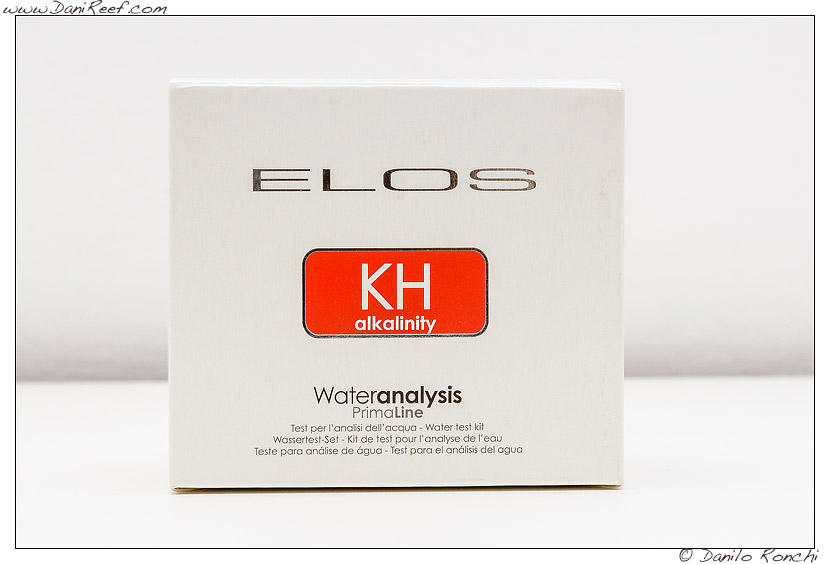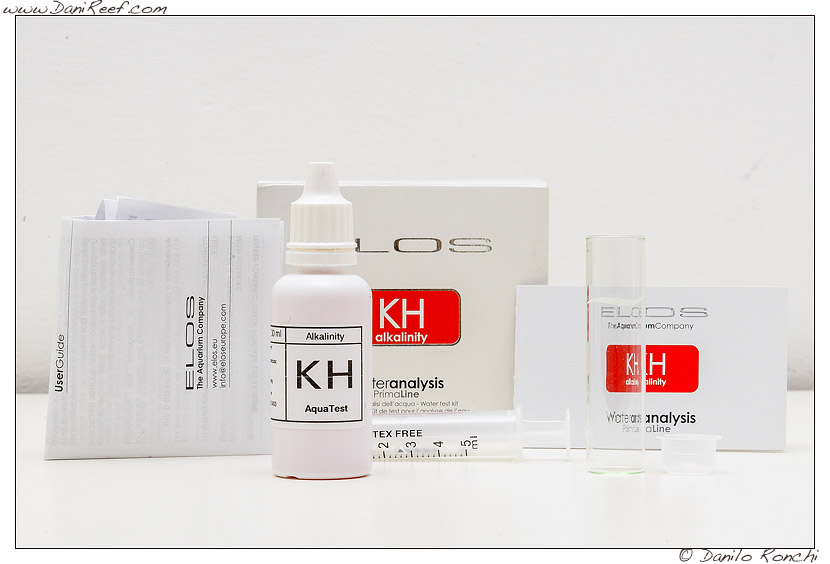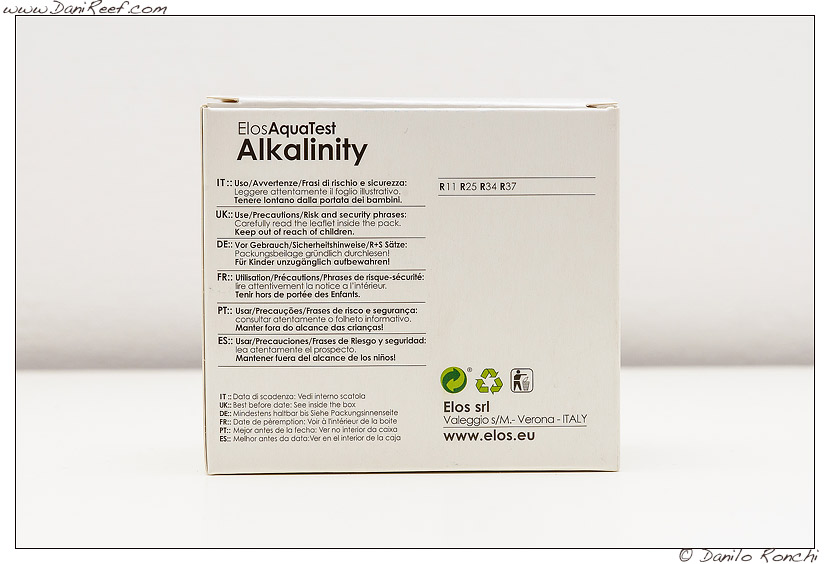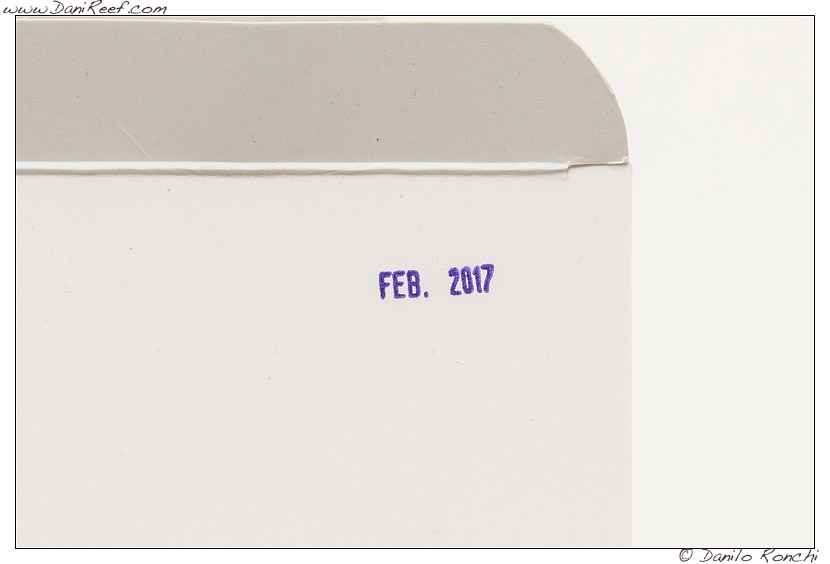
I started talking about Elos test kits in 2007, and have been replacing them as I do every 6 months, I’d like to give you an overview of my experiences. Let’s start with the Elos Alkalinity test, or KH.
As you can see from the photo, the test kit consists of a good-sized box that contains the folding paper with explanations, the leaflet, one glass tube with Elos symbol and its plastic cap, a small bottle containing the liquid reagent called KH and a syringe.
The reagent and the tube are contained inside a plastic bag.
Unfortunately, when they have thought about the box, they did it slightly too low, so the reagent bottle, which in this case is only one, can’t stay standing but must be inserted horizontally.
The test is, in any case, very very simple.
It fills the tube with 5 ml of aquarium water with the excellent syringe provided.
 We need to add a drop of reagent from the KH bottle in the test vial.
We need to add a drop of reagent from the KH bottle in the test vial.
Then we swirl the tube gently for 30 seconds and observe whether there has been a change in color.
If there were no changes in the color, we have to repeat the previous two steps until the color change has occurred towards orange/yellow from blue/cyan.
At that point, the number of drops corresponds to the KH value of our water divided by two. I.e. 16 drops would correspond to 8 KH, and so on. Every drop in fact is equal to 0.5 KH.
Obviously it is always possible to vary the amount of water in the tube to obtain a greater or lesser resolution. If we use 10 ml of aquarium water, instead of 5 ml recommended by Elos, every drop of the reagent will be equivalent to 0.25 KH, whereas decreasing the water in the tube at 2.5 ml, each drop would be equal to 1 KH, and using only 1 ml of aquarium water we will have 1 drop for 2.5 KH, useful to get an idea of the value inside calcium reactor, for example, without finishing the reagent.
This is the leaflet.
One of the things I like to mark is the dropper of the bottle, that is extremely accurate, and the drops are almost always identical to themselves. Elos claims to use a calibrated dropper, thing we can not verify, but, in any case, the result is great. Of course, sometime it might happen that a drop is filled by air and bangs, but my experience shows me a chance lesser than one drop for every box… I advise you to swirl the bottle before using the reagent.
In the back of the box you can read the reagents used, also listed in the leaflet.
Elos fits the expiration date stamped with the date by which you should open the test, useful to understand if the test kit is good or not.
The test is fairly inexpensive since it costs, in Europe, 12,57 €. And, given my experience over time, I can also say that the results have always been in line with what is present in the aquarium, given the many comparisons I’ve done with other tests.
I did not detect any significant difference between this test kit and those I’ve used in the past, similar colors and absolutely comparable readings as usual.
Below you can watch the video, made by the same Elos, that shows how to make the measurement of KH using his test:
Do remember that all tests, although they have a high number of measurements, should be used not after than six months from their first use. Incorrect storage can ruin the reagents and give you false readings.
I recommend you always use your eye to evaluate your aquarium, do not rely only to test kit, and if the tests were to detect a value clearly wrong, before making any countermeasure would be desirable to do it again with other brands deemed reliable. Of course, an eye should check the expiration date, which is essential for such perishable reagents, especially if exposed to moisture and heat.
In addition to calibrated dropper, that for a titration test is absolutely critical, the mode of packaging and conservation are fundamental for right readings.












I use and recommend these kits often. As you mention the KH kit from ELOS is super simple to use, making it our number one choice around the office. An aquaculture facility we work with uses Salifert kits which drive me crazy compared to the fifteen seconds I can run a comparable ELOS KH test.